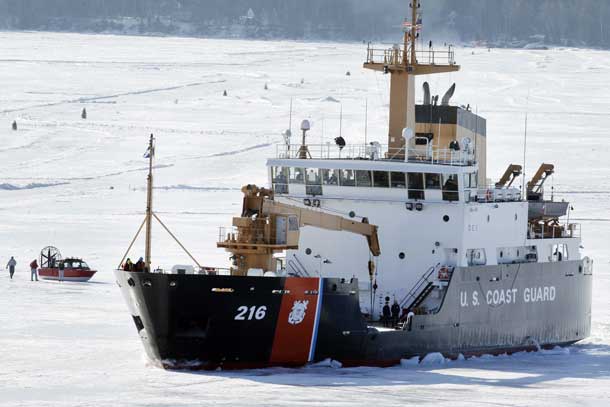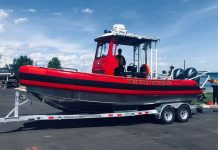
Thunder Bay – NEWS – One of the sure signs of spring is the arrival of icebreakers to start getting the Port of Thunder Bay open and ready for the season.
It is also a sign that the ice on Lake Superior, and other area lakes is starting to melt.
The United States Coast Guard Cutter (USCGC) Alder will be carrying out icebreaking operations at the Port of Thunder Bay, Ontario on or around March 16. The purpose of these operations is to break ice in the area so commercial vessels can access the port safely.
The date is subject to change with no notice, as activities could begin before or after that period, depending on operational requirements or weather conditions.
All ice surface users should plan their ice activities carefully, use caution on the ice and avoid the shipping lanes and icebreaking operations. Even if temperatures are cold, ice can be expected to be deteriorating naturally due to spring conditions and the effects of the sun. Extreme caution must be exercised should anyone venture out onto the ice. Unsafe ice conditions can persist long after an icebreaker has left the area.
Coast Guard icebreaking service on the Great Lakes and connecting waterways is delivered in close co-operation between the Canadian and United States Coast Guards. By working together the two Coast Guards ensure scheduled vessel traffic can move through the shipping channels and into and out of community harbours.






